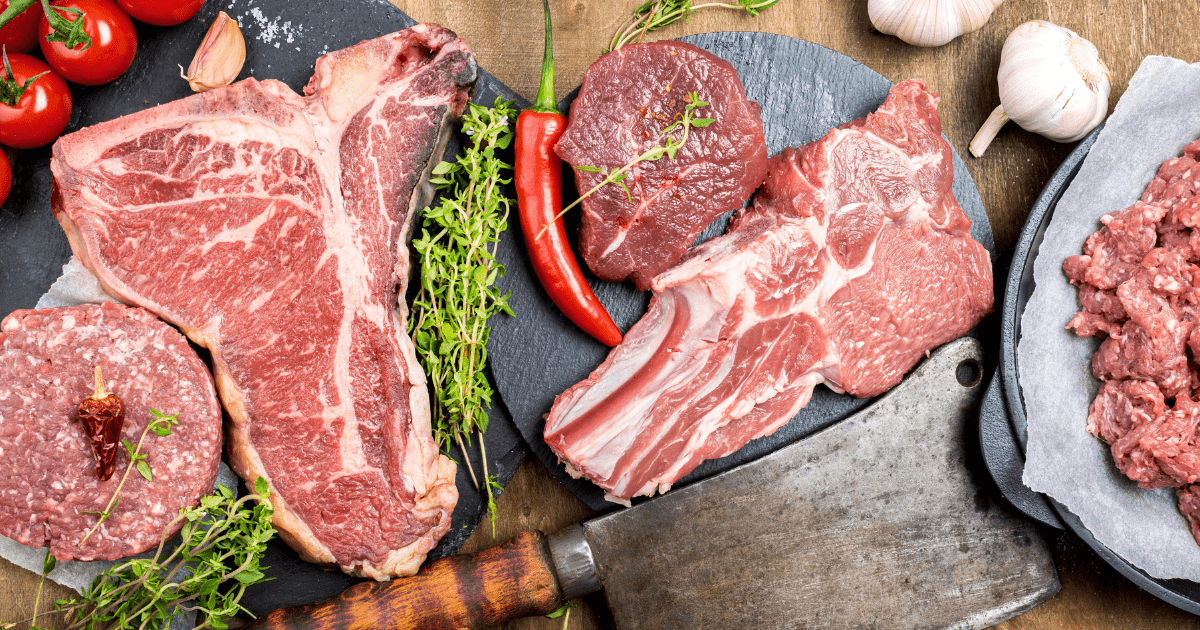In the realm of nutrition, red meat often finds itself in the spotlight, with conflicting information about its health effects leaving many confused. Is it a guilty pleasure or a nutritional powerhouse? The truth lies in balance and moderation. In this comprehensive guide, we’ll explore the benefits and drawbacks of red meat, dispelling myths and shedding light on how it can indeed be a part of a healthy diet.

Understanding Red Meat
Red meat, derived from mammals, includes beef, lamb, and pork. It’s a rich source of essential nutrients such as protein, iron, zinc, and B-vitamins. However, concerns arise due to its saturated fat and cholesterol content. Let’s dissect both sides of the argument to find a balanced perspective.
The Pros of Red Meat
Protein Powerhouse
Red meat is an excellent source of complete protein, providing all essential amino acids necessary for muscle growth and repair. This is especially beneficial for individuals engaged in physical activities or those looking to build and maintain muscle mass.
Iron Boost
Heme iron, found in abundance in red meat, is more easily absorbed by the body compared to non-heme iron from plant sources. Ensuring optimal oxygen transport in the blood and preventing anemia require a sufficient intake of iron.
Vitamin B12 Bonanza
Red meat is a top-tier source of vitamin B12, essential for nerve function, DNA synthesis, and the production of red blood cells. Maintaining adequate B12 levels is particularly important for vegetarians and vegans who may lack this nutrient in their diet.
Rich in Micronutrients
Zinc, selenium, and various B-vitamins are abundantly present in red meat, contributing to a healthy immune system, improved metabolism, and overall well-being.
The Cons of Red Meat
Saturated Fat and Cholesterol
Excessive consumption of red meat, especially processed varieties, has been linked to higher levels of saturated fat and cholesterol. This can contribute to cardiovascular issues if not balanced with a heart-healthy lifestyle.
Processed Meat Pitfalls
Processed red meats, such as sausages and bacon, often contain additives, preservatives, and high levels of sodium. Regular consumption of these may increase the risk of chronic conditions like hypertension and certain cancers.
Environmental Impact
The production of red meat has a notable environmental footprint, including deforestation and greenhouse gas emissions. Choosing sustainable and responsibly sourced options can mitigate these concerns.
Finding the Balance
Mindful Portion Control
Moderation is key. Keep portion sizes in check to ensure you benefit from the nutritional value without overloading on saturated fats and cholesterol. Aim for lean cuts and trim visible fat.
Diversify Your Protein Sources
Red meat shouldn’t monopolize your protein intake. Incorporate a variety of protein sources, including fish, poultry, legumes, and plant-based options, to diversify nutrient intake and reduce potential health risks.
Opt for Lean Cuts
Choose lean cuts of red meat to reduce saturated fat content. Tenderloin, sirloin, and loin chops are examples of lean cuts that provide the nutritional benefits without excessive fat.
Balanced Cooking Methods
How you prepare red meat matters. Opt for healthier cooking methods like grilling, baking, or broiling instead of frying. This helps retain nutrients while minimizing the addition of unhealthy fats.
In conclusion, red meat can indeed fit into a healthy diet when approached with mindfulness and balance. Embrace the nutritional benefits while being cognizant of potential pitfalls. By making informed choices, diversifying protein sources, and practicing moderation, you can savor the juiciness of red meat without compromising your health. So, fire up that grill, but do so with an awareness of what your body truly needs for optimal well-being.
